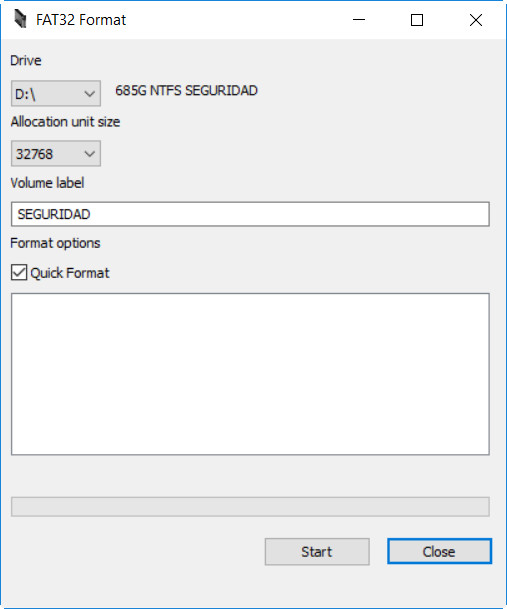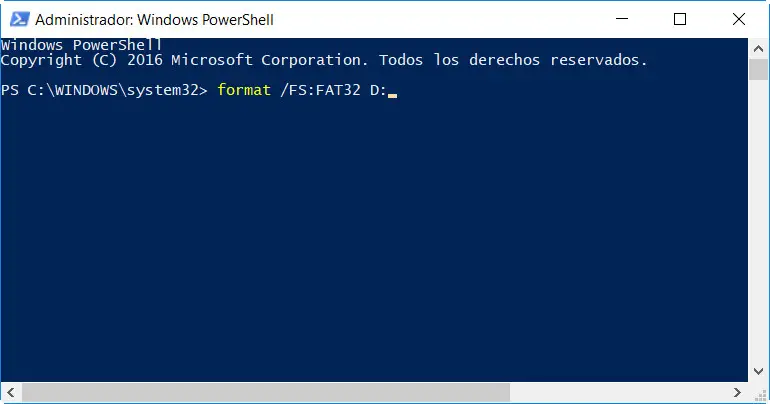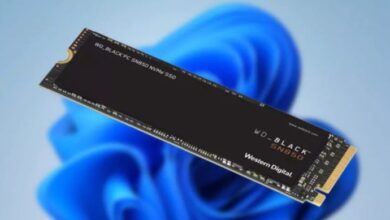How to format FAT32 devices in Windows

FAT32 is a file system that came as an improvement on FAT16 and the old FAT created for MS-DOS. Although other more advanced ones are natively supported by Windows (exFAT and NTFS ), it is still one of the most used.
FAT32 has certain limitations since it cannot store files of more than 4 Gbytes, and it does not allow the creation of partitions of more than 8 Tbytes. It is also problematic when using many levels of subfolders and lacks certain security-level features found in more modern file systems. That is why it is recommended to use others such as NTFS in operating system installations.
However, its simplicity, versatility, and compatibility with other operating systems (Linux, macOS, Android, or other alternatives such as FreeBSD) make it especially suitable for external/removable storage drives such as USB sticks or microSD memory cards.
Table of Contents
FAT32 on Windows
The problem is that the standard tool present in Windows 10 or Windows 11 to format disks (the function that we can find in the file explorer when right-clicking on a connected drive) does not allow using this file system. If you try, you will only see the option of exFAT or NTFS. In addition, previous systems that did offer it did not allow to format drives with storage capacity superior to 32 Gbytes.
I tinker a lot with all types of equipment, and I cannot miss a USB stick or a microSD with this type of file system, the most compatible and suitable for use on devices that do not support others or work worse. I am thinking of testing software, working with the Raspberry, or updating the TV box firmware, to name a few examples. If this is your case and you ever find that you need to use FAT32, there are methods to overcome the situation.
Third-party tools
One of those available is FAT32 Format. A free and portable application that does not need installation and facilitates the task of formatting drives with these types of files. : download (Start button on the link), run, select the drive, activate formatting (it has a quick format option), and start.

Powershell
Applications like the previous ones are recommended for ease of use and speed of execution. Still, if you want to use Windows itself, another method overcomes the limitation of the standard formatting tool. Access the advanced Windows Powershell console and use the command ” format / FS: FAT32 X:” where “X” is the drive we want to format:
The consoles will take much longer to perform the formatting and are more complicated to handle, so we recommend using the FAT32 Format application. In both cases, remember that the handling of individual files in FAT 32 is 4 Gbytes. The theoretical limit of the drive capacity with this type of file system is 16 TB, more than enough for the entire base of devices on the market.

exFAT: better, but less compatible
exFAT was introduced in 2006 and raised in Windows XP and Vista. As its name indicates, it is related to the FAT file system. It is specifically an evolution of this that tries to eliminate the limitations that FAT32 presented, although without introducing many of the improvements present in NTFS.
The main advantage of exFAT compared to its predecessor is that it eliminates storage limitations, can create larger partitions and allows storing files of more than 4 Gbytes without losing one of the outstanding characteristics of FAT, the reading speed and writing.
Like FAT32, exFAT is ideal for pen and external drives in general, with special mention to devices with more than 16 Gbytes of capacity. However, FAT32 offers more and better compatibility with a broader range of systems. Therefore that exFAT is relegated to specific contexts.



